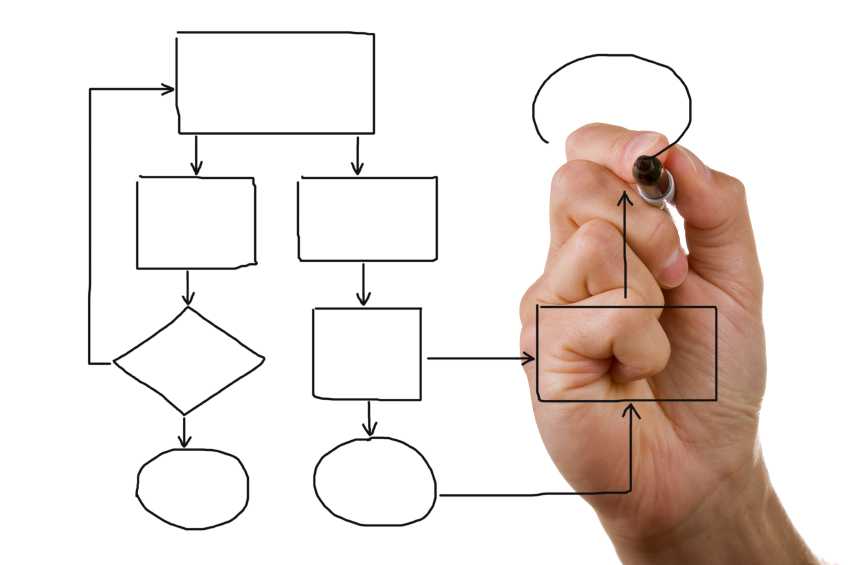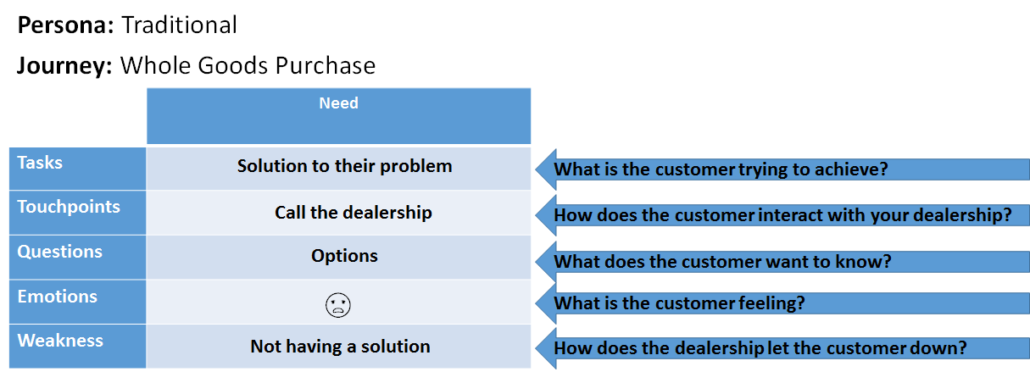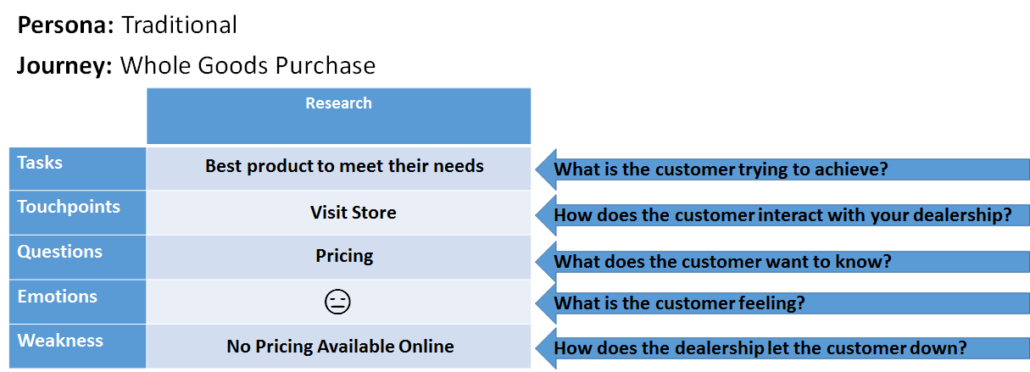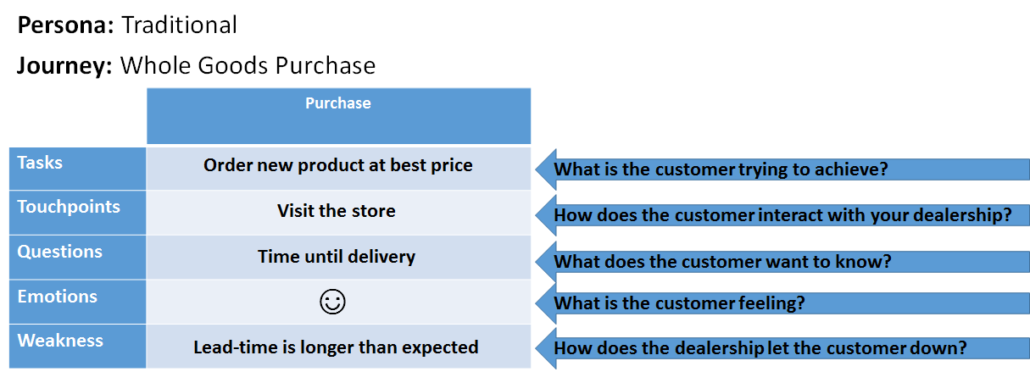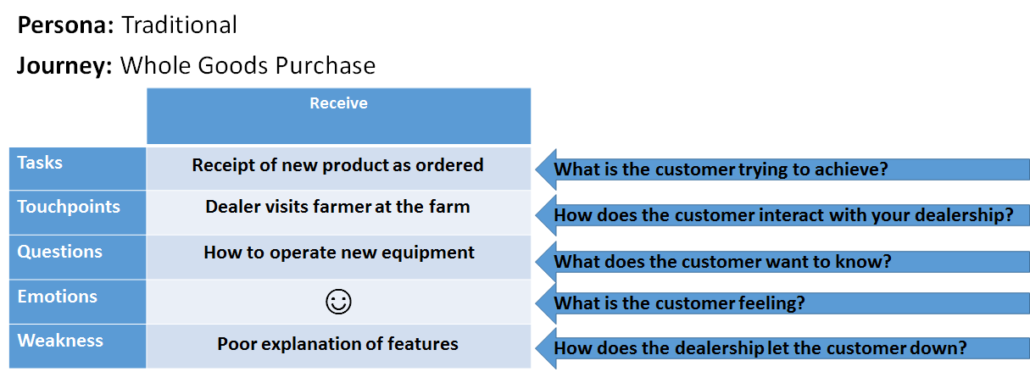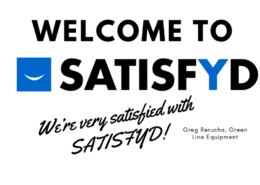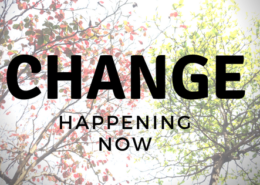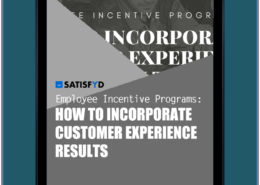A Quick Start Guide to Mapping the Customer Journey at your Dealership
Per CSM Magazine (The magazine for Customer Service Managers & Professionals) 68% of customer defection takes place because customers feel poorly treated. It can cost from 5 to 25 times more to get a new customer than to retain existing ones. To combat those extra costs in your dealership, we recommend utilizing a customer journey map. A customer journey map is a visual representation of the actions, thoughts, and feelings of a customer throughout the entire engagement process with your business. It shows what aspects of your business are operating optimally and areas where more attention should be given.
By creating a journey map, you have the opportunity to see where information and feedback is shared and how well it aligns to key functional areas. Be sure to share the information with all employees, they will recognize how they, as individual contributors, influence the customer and the customer’s perception of your brand.
Download the SATISFYD Customer Journey Mapping Worksheet
A little background
When you begin to think about journey mapping it’s important to understand the two different states of a journey map: Current State and Future State.
The Current State describes the experience your customers are going through today. It focuses on the customers’ current pain points and where they are being let down. It also helps you identify opportunities to solicit feedback and allows you to prioritize interactions that have the greatest effect on increasing customer loyalty.
The Future State maps something you want your customers to experience in the future, that is, their intended experience. The Future State is a journey that a customer hasn’t taken before. It could be a new offering, an enhancement based on a customer suggestion, or a change to an existing process or procedure. The importance of a Future State journey map is it results in a customer-focused change, creating the foundation to set strategic direction within an organization.
The business of Journey Mapping
To create your customer journey map, we utilize 4 key components:
1. The Customer Lifecycle
The Customer Lifecycle gives you the basis for your customers’ interaction with your business. It is a holistic picture of your customers’ engagement with your brand. We’ve provided an example Customer Lifecycle, but you made need to adjust based on your specific needs.
When customers move through the Buy phase and into the Ownership phase, everything really starts to come alive and you begin to make your brand promise and create brand loyalty. Customers keep coming back and become promoters of your brand and organization. But if there are places where customers feel let down they may drop out of the lifecycle. They may not only leave your business but potentially speak poorly of your organization, leading to the loss of other potential customers.
2. Segments + Personas
Identify who your customers are and categorize them into different segments or personas. A buyer persona is a semi-fictitious representation of your customer that describes their demographics, behavior, motivations and goals. By looking at your actual customers you can start to create your different buyer personas. One way to identify customers is by who may behave more traditionally, preferring in-person/phone conversations compared to others who prefer to interact on a digital basis. Consider the size and scope of the customers’ business as well as their experience and goals. Creating personas and segmenting your customers will help you understand how one customer’s journey will be different than another’s and will identify different areas for improvement.
3. Identify the Journey
Next, identify the journey or experience to map. This is the description of what your customer is doing – their actions, thoughts, and feelings – from their perspective. For example, a journey map could be a whole goods purchase, a service experience, ordering parts, etc. Create a list of the different journeys and pick one that is straightforward as your first mapping activity. It’s important to remember that while each customer journey will be different, there will be an interplay between them because of similarities in personas, and because customers may travel down multiple journeys. Their experience in one journey can impact their perception of a future journey.
4. Knowledgeable Resources
Select members from across your organization and bring them together to map out your customer’s journey. The journey could be quite complex, involving multiple interactions with different people within your organization. One person alone is not going to fully understand interactions, feelings, and thoughts that a customer may have at each point. It’s also key to get leadership involved. As we touched on before, journey mapping can be an integral part of strategic direction, so make sure to have someone from leadership involved to provide input and a different perspective.
Journey Mapping in action
(Download the SATISFYD Customer Journey Mapping Worksheet to follow along with these steps.)
Using the 4 components above, we are going to create a sample journey map of the Buy Phase of the Customer Lifecycle. For our example, we’ll use a grid.
Customer Journey Grid
Our grid includes the 8 phases of the Customer Lifecycle as columns: Need, Research, Purchase, Receive, Use, Maintain, and Recommend. We will touch on just the buy phase for this example, which includes just the Need, Research, Purchase, and Receive phases.
The rows include five key elements that bring together the actions, thoughts, and feelings customers experience when interacting with your business. As you work through each phase, you’ll create your map by answering these questions.
- Tasks – “What is the customer trying to achieve here?”
- Touchpoints – “How does the customer interact with your dealership?”
- Questions – “What does the customer want to know?
- Emotions – “What is the customer feeling?”
- Weakness – “How has the customer been let down?
Before you begin it’s important to set parameters for your customer journey map. Identify the persona for the map and label it clearly. Set the emotions you want to capture, such as happy, neutral, and unhappy. You can download a Customer Journey Map Worksheet by filling out the contact form on this page.
Customer Lifecycle: Need Phase
Our journey is for a traditional customer purchasing whole goods. In the Need phase, the Tasks element answers the question – What is the customer trying to achieve? In this example the customer’s task is to look for a solution to their problem, a piece of equipment has broken down. At this point it makes more sense to make a new purchase, then it does to repair. The customer wants to know the different solutions available to solve this problem.
Touchpoints from a traditional customer in the Need phase could be that they call your business or come in to look at a product and to speak with someone. Or perhaps they want to educate themselves first and will look at your website before calling or visiting.
Your customer will have questions, and the Need phase allows you to attempt to anticipate their needs to better service the customer. Often questions include possible options. In our example of broken equipment, “What equipment do you have available that could replace this one?” helps the customer stay with you along their journey and on to the Research phase.
The fourth element describes the emotions held by the customer. In the Need Phase, they might be frustrated or disappointed because of this unplanned purchase. To keep things simple document as unhappy. It’s important to be aware of negative emotions going into the experience and identify how to combat or offset that to provide a better experience.
Finally, weakness is an opportunity for improvement as it describes potential ways we let the customer down. The most common would be not having the right solution. This outcome will cause a negative effect in the customer lifecycle, and may even cause them to drop out. It’s important to prevent customers from dropping out early as best as possible. What are ways to keep them moving along that lifecycle and create that loyalty and promoter of the brand?
Customer Lifecycle: Research Phase
As the customer deepens their relationship with your business, they take your suggested options and begin their Research.
Their task, i.e., what the customer is trying to achieve, is to evaluate their options and determine the best one that meets their needs. This phase could be fairly short and simple involving a single pass or more complex and lengthy, involving multiple iterations through the same phase. The more you can learn about the customer’s needs and their decision-making criteria, the easier it will be to keep them on their journey.
Touchpoints from a traditional customer during the Research phase likely will be a store visit. They will be spending more time than the Need Phase to learn about the equipment you have on hand. This interaction allows you to learn more about the customer’s needs and make a good connection.
During the Research Phase, your customer will want answers to a multitude of questions. Engage your customer and learn their decision-making criteria in order to provide them with the best solutions. Criteria could include availability, price, performance, add-on, warranty, financing or maintenance. Having accurate information readily available increases their confidence in your business and keeps them on the Customer Lifecycle.
And at this point in the Research phase the customer’s emotions maybe neutral. They have come to terms with the need to replace the equipment and they have solutions to evaluate. There may be some negative emotions lingering but they are improving.
During Research, a weakness could be that your potential solutions may not meet the customers purchasing criteria: too expensive, options not available, equipment back ordered, pricing or technical information was old or not available. To prevent the customer from dropping out of the life cycle at this stage, implement a comprehensive follow-up process to provide updates and alternative solutions that are closely aligned to their desired solution.
Customer Lifecycle: Purchase Phase
The third phase in the buy portion of the customer lifecycle is to select or purchase the equipment.
The Task in the Purchase phase is to provide the customer with the equipment that best meets the customer’s criteria. This can include ordering the equipment if it’s not in stock.
Touchpoints from a traditional customer likely will be a store visit to complete the order.
Questions asked during order may include lead-time, product technical support, maintenance, and warranty. In addition, the customer may want to know how to resolve their downtime issue and get back into production.
The customer’s emotions continue to improve and move toward happy. They have a solution to their problem that meets their criteria.
A weakness could be a component or option is on back order and the lead time is longer than expected. Take this opportunity to prepare for quick solutions. For example, identify ways to minimize risk, reach out to other locations or buy direct to reduce or eliminate the back order or lead time. Any opportunity to improve on the experience continues to build confidence, trust, and loyalty.
A Customer Lifecycle: Receive Phase
The final phase in the buyer’s lifecycle and the last phase we cover, is when the customer receives the equipment purchased.
The Task is for the customer to receive their new product as ordered.
The customer Touchpoints could be the dealership or at the customer’s location.
Questions could include instructions on how to operate the equipment, since their original equipment was older and technology has changed. Providing sufficient time to ensure the customer is comfortable with operating the equipment shows you are interested in their success and is an important step in continuing to build trust and loyalty.
The customer’s emotions are hopefully happy as their new product is delivered as ordered.
A potential weakness in the Receive phase is poor explanation of features. Ensure your employees are prepared to provide the best experience possible and can explain all features.
Finishing the Journey
The last 3 phases Use, Maintain, and Recommend make up the Ownership Phase. We challenge you to take the same steps we just provided and incorporate even more detail and de-railing possibilities when finishing your journey maps. Be sure to continually find ways to keep your customer in your Customer Lifecycle by understanding and improving the different experiences that occur on a day-to-day basis.

